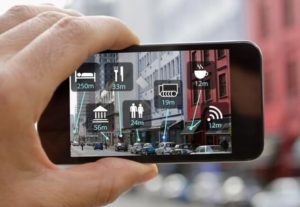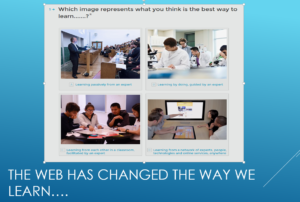Here is my latest research findings as presented at the Networked Learning Conference 2020, and subsequently developed as a book chapter for the Springer publication ‘Conceptualising and Innovating Education and Work with Networked Learning‘ (eds. Nina Bonderup Dohn, Jens Jørgen Hansen, Stig Børsen Hansen, Thomas Ryberg, Maarten de Laat, 2021) in the chapter ‘A Framework for the Analysis of Personal Learning Networks’:

You can explore the network map HERE using password 3563636. Firstly you will see an individual PLN, then by clicking on ‘Combined’ (followed by the ‘select all’ option) you’ll see the map above. After that you can filter the combined map by any of the external factors which can shape the size, usage and preferences within a Personal Learning Network (PLN) that you see listed on the right-hand side.
Network Size can be seen by the number of nodes in the network map. Network Usage is visible as a percentage of total interactions (percentages are displayed as tool tips on-screen with mouse-over hover). Network Preferences are observable as thicker/thinner edges (connections) between network nodes representing a higher/lower amount of activity along that path. The thicker the edge connecting the nodes, the more frequently that network path has been activated.
Please feel free to explore the maps and re-use the findings under Creative Commons licence CC BY-NC 4.0 

Drawing from the various domains, concepts and ideas represented in the above graphic, the Framework was developed (see below).

The conceptual underpinnings of the Framework lead to an understanding that a PLN consists of an Ego (a single person), who interacts via a mode (either a digital device or non-digital means e.g. face-to-face), for a particular interaction purpose, with a specific human or nonhuman endpoint. With this conceptualisation comes the concomitant questions of:
- How big are these networks? (network size)
- How are these networks used? (network usage)
- What interaction preferences are visible in these networks? (interaction preference)
- Are any of these factors significantly different for different types of people?
The Framework was then deployed via a quantitative survey which was embedded as a learning activity in the ‘Learning in the Network Age’ MOOC available on FutureLearn (written and created by me as part of this research programme). This innovative data collection methodology enabled a large and diverse sample of PLNs to be captured and analysed, consisting of 842 respondents resident in 92 different countries and 20 different ethnicities. Participants ranged in age from under 18 to over 75, were positioned across the full Digital Resident – Digital Visitor spectrum (White & Le Cornu, 2011), and engaged in the full range of activities (work, study, caring, leisure) on the day of reporting. It is worth noting that the MOOC-based data collection method will have led to a degree of sample bias alongside its clear benefits in reaching a large number of diverse global individuals.
The descriptive results for the whole sample indicates that regardless of who we are, where we live, and our contexts, attitudes and activities (external shaping factors) the average PLN will have a Network Size of 62 nodes (from a maximum possible network size of 335 nodes), a Network Usage of 296 interactions every day, and a strong Interaction Preference for digital devices – 77% of all daily interactions – with mobile-/smartphones constituting 34% of all interactions. We also interact almost equally with human and non-human endpoints (e.g. search engines, websites, social media and other platforms, forums/groups/blogs….etc). (See below)



To find more detailed descriptive results, please explore the book chapter in full below:
In addition, differences observable between sample subsets from the descriptive analysis were then statistically tested for significance in SPSS using a univariate (1-way) ANOVA test for network size and a multivariate, repeated measures Mixed ANOVA test (2-way) featuring within-subject variables (the mean number of interactions with Mode, Purpose and Endpoint) and between-subject variables (the six external shaping factors) to compare means between different sample subsets in network usage and preferences. The tests returned significance values (at a confidence level of 95%, p <0.05) for the main effect of the within-subject variable under test, the main effect of the between-subject variable under test and the interaction effect of the within- and between-subject variables.
Analysis indicated that the size of a PLN is significantly impacted by where we live, what we are doing and what we think and feel about technology, but not by our gender, stage of life or ethnic group (but not in all sample subsets). Equally, PLN usage is significantly influenced by our gender, life stage, main activity and attitude to technology, but much less so by our ethnicity and where we live (but again not in all sample subsets). The external shaping factors, in most cases, impact the number of interactions we choose to make with different devices (inc. face-to-face). They also affect the number of interactions we make for different purposes, as well as the number of interactions we choose to have with people and things.
In contrast, the interaction preferences we express through our PLNs are considerably less impacted by the six external shaping factors. Regardless of gender, life stage, ethnicity, region of residence, main activity or attitude to technology, we tend to prefer to use devices in roughly the same ways to undertake interactions for similar purposes by interacting with similar human and non-human endpoints.
In short, how diverse people from across the world build and use their PLNs shows some variation in size, considerable variation in usage, but interesting homogeneity in interaction preferences and there is considerable nuance within sample subsets too.
(Again, much more depth can be found in the book chapter:)
My deepest thanks go to the Networked Learning community, to the conference organisers, and to the very patient and hard-working book editors for considering my work interesting enough for inclusion.
















